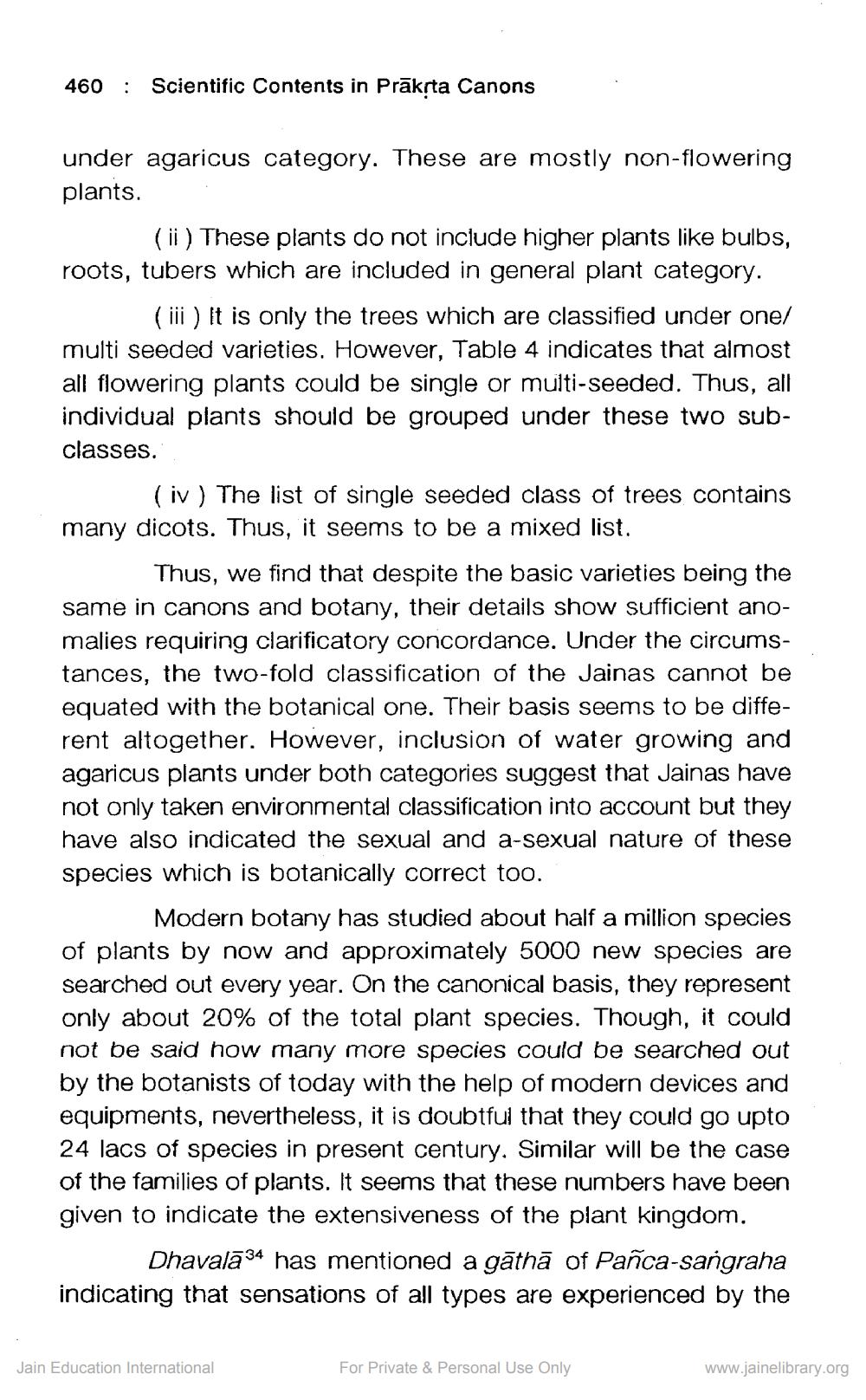________________
460 : Scientific Contents in Prākta Canons
under agaricus category. These are mostly non-flowering plants.
(ii) These plants do not include higher plants like bulbs, roots, tubers which are included in general plant category.
(iii) It is only the trees which are classified under one/ multi seeded varieties. However, Table 4 indicates that almost all flowering plants could be single or multi-seeded. Thus, all individual plants should be grouped under these two subclasses.
(iv) The list of single seeded class of trees contains many dicots. Thus, it seems to be a mixed list.
Thus, we find that despite the basic varieties being the same in canons and botany, their details show sufficient anomalies requiring clarificatory concordance. Under the circumstances, the two-fold classification of the Jainas cannot be equated with the botanical one. Their basis seems to be different altogether. However, inclusion of water growing and agaricus plants under both categories suggest that Jainas have not only taken environmental classification into account but they have also indicated the sexual and a-sexual nature of these species which is botanically correct too.
Modern botany has studied about half a million species of plants by now and approximately 5000 new species are searched out every year. On the canonical basis, they represent only about 20% of the total plant species. Though, it could not be said how many more species could be searched out by the botanists of today with the help of modern devices and equipments, nevertheless, it is doubtful that they could go upto 24 lacs of species in present century. Similar will be the case of the families of plants. It seems that these numbers have been given to indicate the extensiveness of the plant kingdom.
Dhavalā 34 has mentioned a gāthā of Pañca-sangraha indicating that sensations of all types are experienced by the
Jain Education International
For Private & Personal Use Only
www.jainelibrary.org




